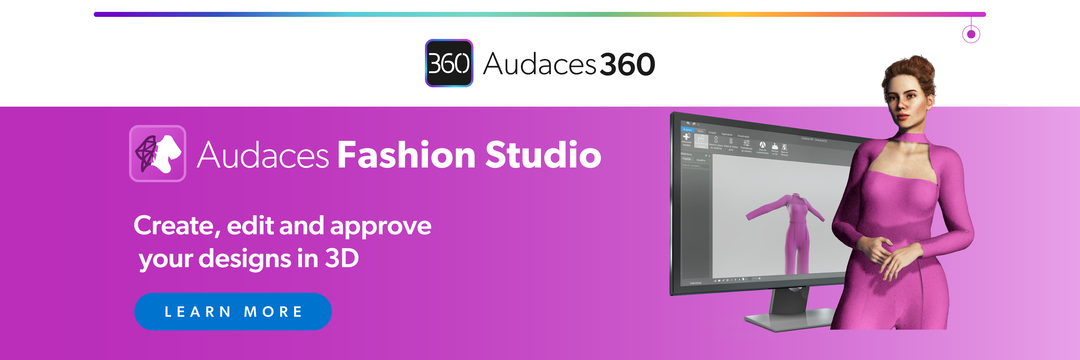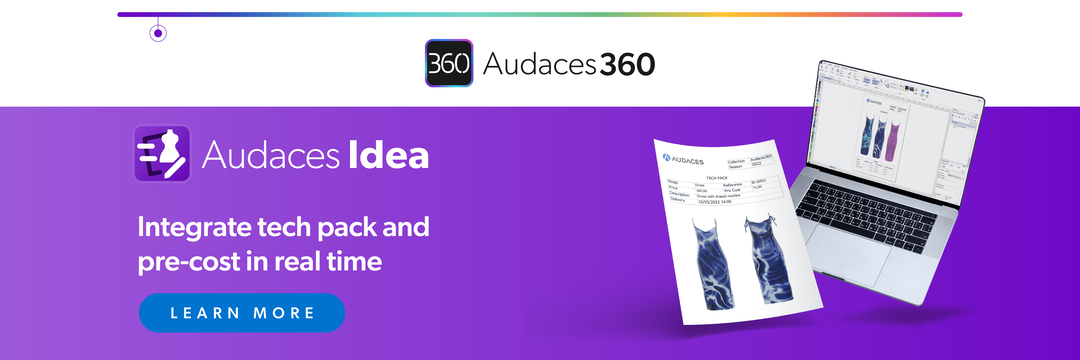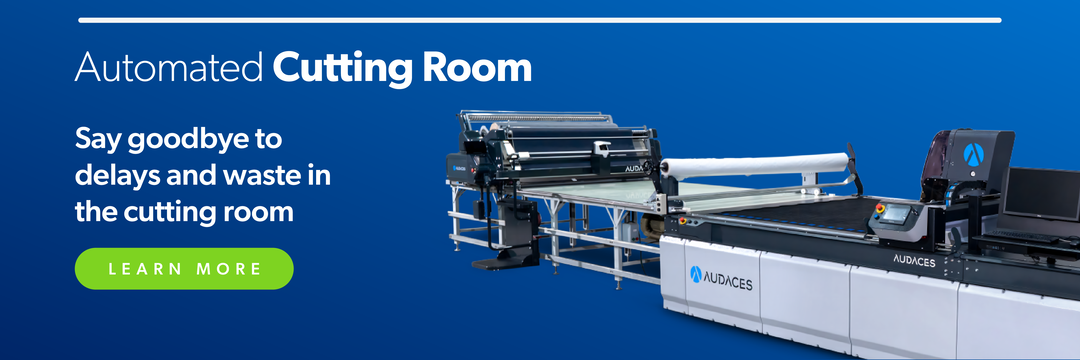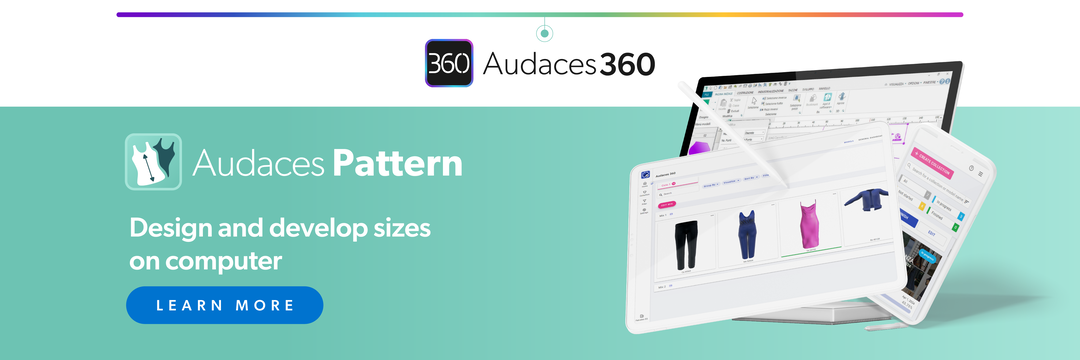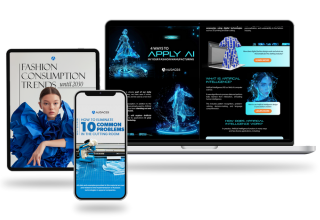Summary
- 3D sketch brings ideas to life in a virtual environment, allowing designers to visualize garments before production.
- It speeds up the creative process, reduces fabric waste, and helps brands cut development costs.
- Want more insights like this? Subscribe to our newsletter and stay ahead in the world of fashion technology!
Fashion is an industry that thrives on creativity but also faces constant pressure to be faster and more efficient. Traditional design processes often involve multiple prototypes, long approval cycles, and unnecessary fabric waste.
This is where technology steps in to transform the way ideas come to life. One of the most innovative solutions available today is 3D sketch. With it, designers can model their creations in a digital environment, previewing garments as if they were real.
In the next paragraphs, you’ll discover how it works in detail and what makes it such a powerful tool for fashion design.
Happy reading!
Sumário
What is 3D sketch?
3D sketch is a digital tool that allows professionals to create and visualize ideas in a three-dimensional environment. Instead of working with flat drawings, designers can bring their concepts to life in a virtual space. It’s ideal for simulating depth, movement, and perspective.
In fashion, 3D sketch is especially valuable because it transforms the creative process. You can draw, model and visualize a garment directly on a virtual mannequin. The software shows how fabrics will drape, fold, or stretch.
Designers no longer need to rely only on imagination or multiple physical prototypes to preview the final result.
With 3D sketch, it’s possible to have the freedom to test colors, patterns, textures, and details instantly. It empowers brands to innovate while reducing waste and improving efficiency.
What is the difference between 2D and 3D sketch?
The main difference between 2D and 3D sketch lies in the way of representing ideas. A 2D sketch shows a flat drawing with height and width but no depth.
It’s useful to communicate initial concepts, but it doesn’t give a full sense of how the design will look in reality.
On the other hand, a 3D sketch adds depth and perspective, creating a more realistic visualization of the design. In fashion, this means being able to see how a garment fits a body and how details interact with one another. This dynamic view reduces uncertainty and speeds up the approval process.
The two approaches have value, but it’s undeniable that 3D sketch offers a modern advantage.
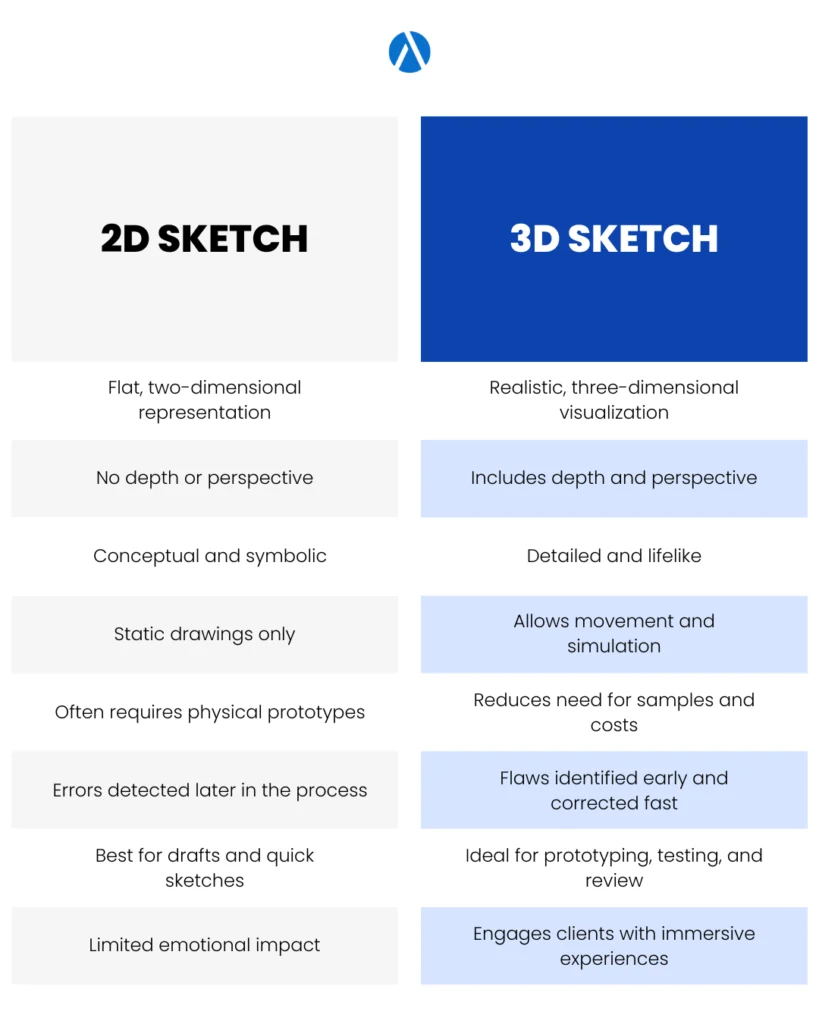
How does the 3D sketch creation process work?
The creation process in 3D sketch usually begins with a base drawing or a digital model. You start by outlining shapes, lines, and structures in specialized software that supports three-dimensional visualization.
Once the base is ready, you can add details such as textures, colors, and proportions. This means applying fabric simulations, adjusting patterns, and experimenting with different styles in real time.
The process allows for immediate feedback, making it easier to refine designs without wasting materials.
The final stage involves simulation and review. It’s time to test how the creation behaves in various scenarios. It could the garment moving with the body or rotating and examining a product from all angles.
Learn more: What are the benefits of learning 3D drawing?
What are the benefits of 3D sketch?
3D sketch offers a wide range of benefits to help you work faster, smarter, and more creatively. Check it out:
Realistic project visualization
One of the greatest advantages of 3D sketch is the ability to see projects as they would appear in real life.
Unlike flat drawings, three-dimensional models show depth, perspective, and proportion, offering a complete view of the design. This helps designers and clients understand the result before any production begins.
Learn more: Why simulate the 3D fit of garments before production?
Faster creative process
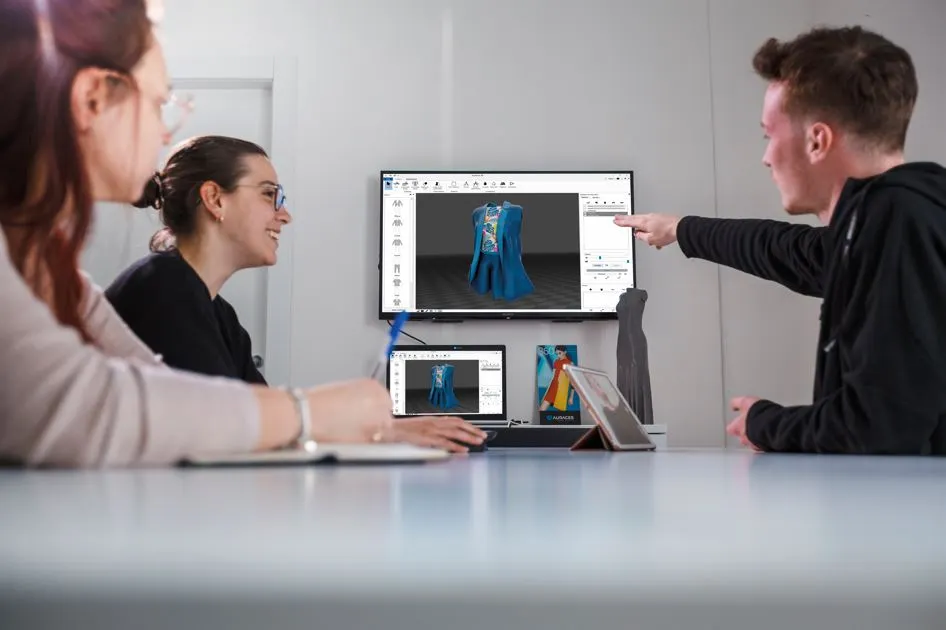
3D sketch accelerates the creative workflow by reducing the time spent on revisions and physical samples. Designers can test multiple ideas in the digital environment without having to start from scratch every time.
This flexibility allows them to explore new possibilities quickly.
For instance, in fashion, you can adjust a single design in seconds to test different colors, fabrics, or details. Instead of redrawing or remaking prototypes, changes happen instantly. The result is a much more dynamic process.
Learn more: 6 benefits of using 3D CAD in your fashion business
Fewer errors and less rework
Traditional design processes often reveal flaws only during production, which leads to costly mistakes and wasted resources. With 3D sketch, you can detect many of these issues early, reducing the risk of error.
By simulating real conditions, you can identify proportions, alignments, and functionalities before creating a physical model.
This is particularly useful in fashion. Mistakes in sizing or fabric behavior can mean starting the project all over again. As a result, brands minimize rework, save resources, and improve efficiency across the entire workflow.
Learn more: 5 benefits of 3D modeling software in your apparel company
Possibility of interactive simulations
Another powerful benefit of 3D sketch is the chance to simulate how designs behave in real life. Instead of relying on imagination, professionals can watch their projects in motion and interact with them digitally.
Interactive simulations are valuable in several areas like product design or engineering, where you must test functionality before production. In fashion, it means testing how a dress flows when walking, how a jacket reacts to movement, or how fabric stretches and folds.
Still unsure if 3D design is right for you? Explore it step by step in our practical guide. Download now!
Where can you apply 3D sketch?
Professionals can apply 3D sketch across multiple fields, bringing innovation and efficiency to creative and technical industries.
Here are some of the main fields that benefit from this technology:
Fashion and clothing design
Fashion designers can draw, test, and visualize garments in a digital space, eliminating the need for endless physical prototypes. This reduces costs and speeds up production timelines.
Another advantage is the ability to experiment with fabrics, colors, and styles instantly. Brands can adapt a design into different variations, making it easier to create full collections without wasting resources.
It also improves communication with clients and suppliers. By sharing realistic digital models, everyone involved can clearly understand the vision and align expectations before production starts.
Learn more: Discover 5 major benefits of 3D simulation for fashion
Architecture and interiors
Professionals use 3D sketches to create lifelike representations of buildings and spaces. Instead of flat floor plans, clients can visualize rooms, layouts, and details in a way that feels immersive.
This approach also makes it easier to test different materials, colors, and lighting conditions. Before, architects needed to rebuild a model to apply changes. Now, they can do it in a few clicks, saving both time and money.
In addition, interactive walkthroughs can help clients engage emotionally with the project.
Product design
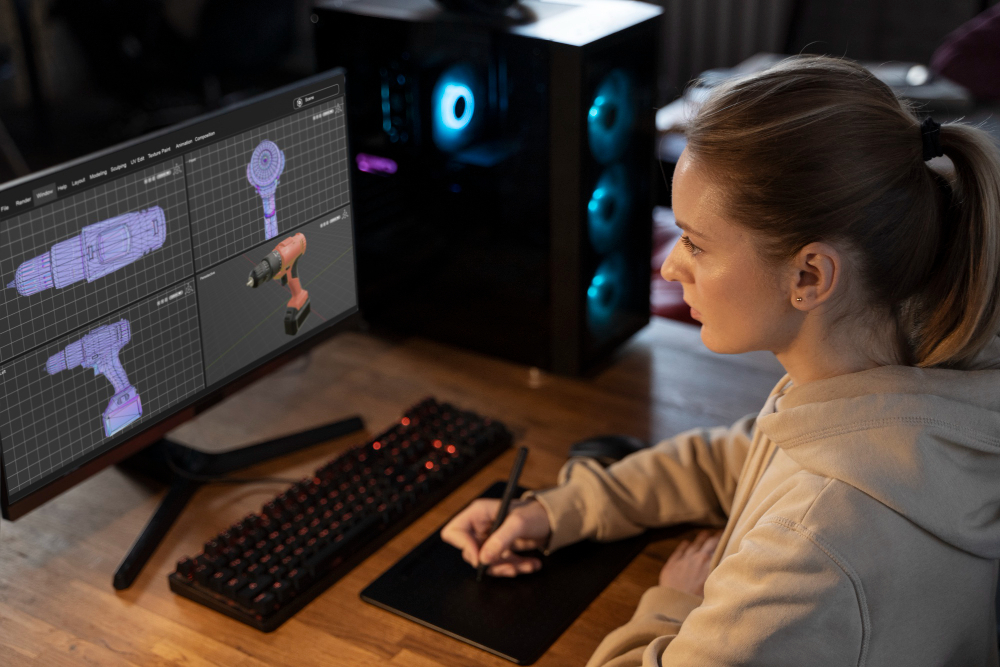
In product design, it helps bring concepts to life quickly and accurately. Designers can model items with precision, showing not just shape but also functionality.
The ability to adjust proportions and details in real time makes the process more flexible. It’s possible to test products digitally before moving into expensive prototyping stages. This saves money and reduces risks, while also encouraging innovation.
Games and animation
Artists use it to design characters, objects, and environments with depth and realism, creating immersive worlds for audiences.
The digital format allows for constant adjustments and experimentation. Creators can modify poses, textures, and movements instantly, refining the visual storytelling.
This efficiency speeds up production and enhances creativity. Teams can focus more on artistic expression while relying on technology to handle technical precision.
Learn more: 7 steps to bring realistic costumes to life using 3D design
Engineering and prototyping
Engineers benefit from 3D sketch because it allows them to test functionality and performance before building physical models.
Digital prototypes make it possible to simulate stress, movement, and usability. This helps identify flaws early and prevents costly mistakes during manufacturing.
Create your 3D sketches with the support of Audaces technology!
Audaces Fashion Studio
Audaces Fashion Studio is a groundbreaking innovation for fashion designers within Audaces360 multisolution.
This innovative technology empowers professionals to create smarter sketches on a 3D mannequin. It provides tools and functionalities to enhance your design process.
Its features enable you to examine fit, drape, and movement in different body types. Explore fabrics, colors, textures, and apply prints in a few clicks.
Audaces Idea
Audaces Idea is your solution for creating and applying prints to your designs.
It helps end errors and streamline communication between design and the other teams. This way, you can reduce the development cycle and ensure timely deliveries.
Audaces Idea also includes integrated tech packs and automatic pre-cost calculations. You can visualize all your creation information on a single screen during the process.
Automating technical tasks frees up your time for more design exploration!
Audaces Sofia
Meet Audaces Sofia our cutting-edge fashion Artificial Intelligence. It helps you enhance your creations with an unlimited source of inspiration.
This solution has the power to transform concepts into reality in a matter of minutes. Some simple prompts are all you need to generate print variations.
Audaces Sofia integrates with Audaces Idea and Audaces Fashion Studio. This combination provides you with the complete solution to create effortlessly.
Discover Audaces360 and unlock a world of possibilities for fashion design and production. Explore our comprehensive suite of solutions today!
FAQ
3D sketch is a digital tool that allows professionals to create and visualize ideas in a three-dimensional environment. Instead of working with flat drawings, designers can bring their concepts to life in a virtual space.
A 2D sketch shows a flat drawing with height and width but no depth. On the other hand, a 3D sketch adds depth and perspective, creating a more realistic visualization of the design.
They include realistic project visualization, faster creative process, possibility of interactive simulations, and fewer errors and rework.


